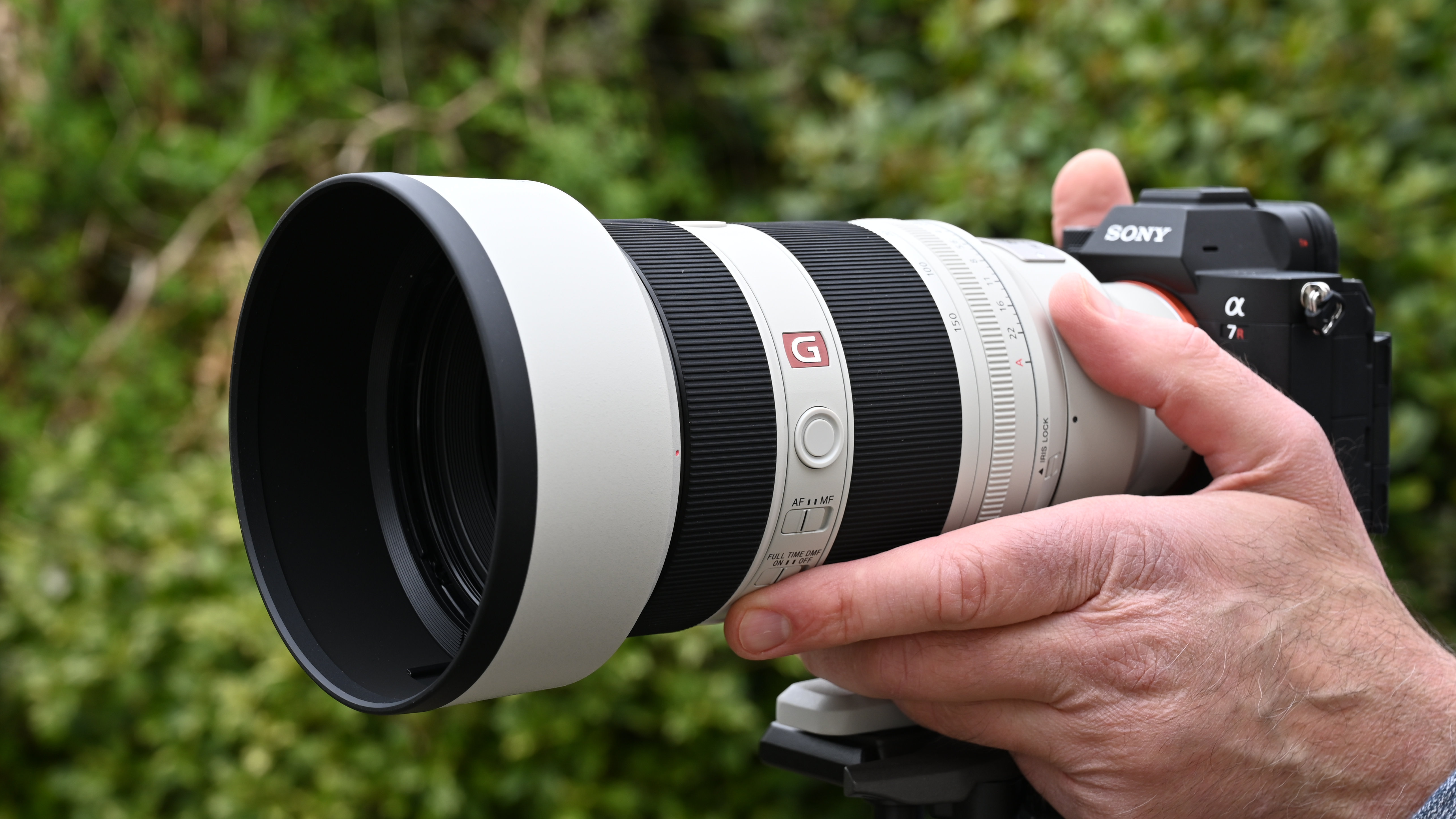The best cheap drones to buy
Fly high without breaking the bank with one of the best cheap drones on the market
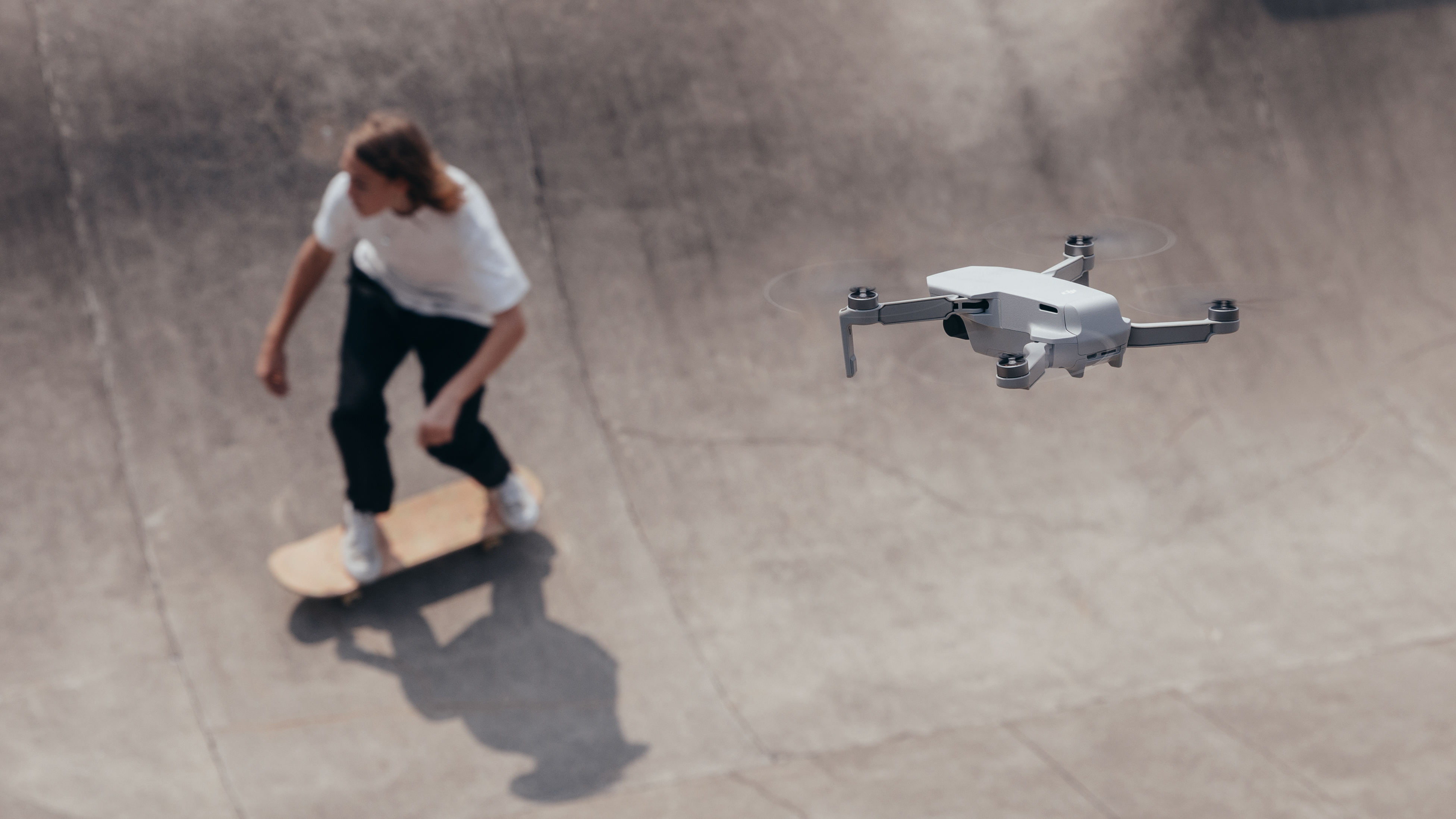
The best cheap drones prove that drone flying and drone photography don’t have to be expensive pursuits. While there are plenty of dazzlingly expensive drones out there, they tend to be geared toward pros, or at least pretty serious creators (there are even models specifically for film crews).
For the casual consumer, and for kids and novice users, there are lots of inexpensive budget drones that are easy to fly – and more importantly, are a lot of fun, too.
In this guide, I've picked out the best drones that can be bought for the right price. I've been selective, and only picked drones that I think are worth the money. For the team here, the main goal (unless it's a pure toy) is a camera. The word 'cheap' can mean different things, to different people, so I'll add that all of these drones offer great features for their price, and and some of these have a low cost of entry!
If this will be your first drone, you should have in mind a few key features. Weight is most important (we'll come to that), but also flight time/battery. The stated time is usually optimistic but is a useful comparison. If it has GPS it will be able to hover safely, so be easier to fly outdoors. Will it need a phone (if you're buying for kids, do they have one?)
In most territories, 250g (8.8oz) is the legal maximum weight beyond which a drone needs to be registered (check out our guide to drone rules if you’re unsure), so be aware that getting a heavier drone comes with some paperwork.
While all the drones on this list tend toward the budget-friendly, we’ve stuck to examples that give you good value. If it seems a bit pricey, it’s because it more closely competes with prosumer models.
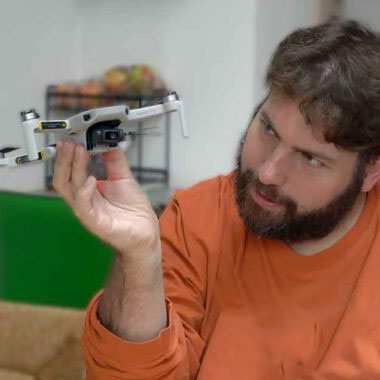
Adam has long obsessed with cameras and tech, and jumped into drones even before you could buy them – building several of his own before off-the-shelf possibilities emerged. He is not just our resident expert on all aspects of camera drones, but the author of several books on the subject including bestsellers The Complete Guide to Drones and The Drone Pilot's Handbook. As a father, he's also keen to find a few cheap and robust drones!
Top picks
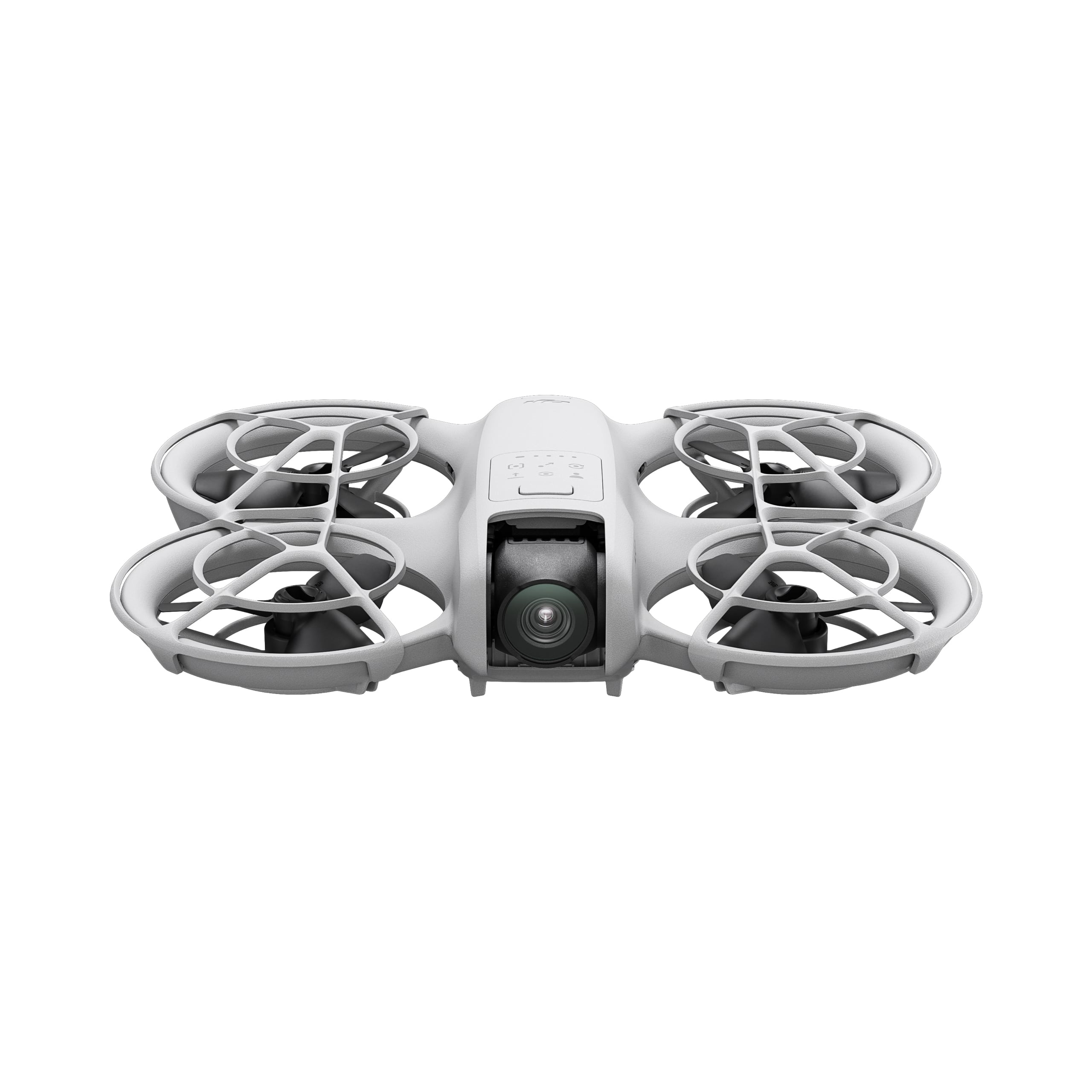
Best STEM drone
If you want a very reasonably priced drone that can also do everything, then is an obvious winner. Hand-launch, AI tracking, phone control or a 'real' remote and even FPV goggles – making it nearly limitless.
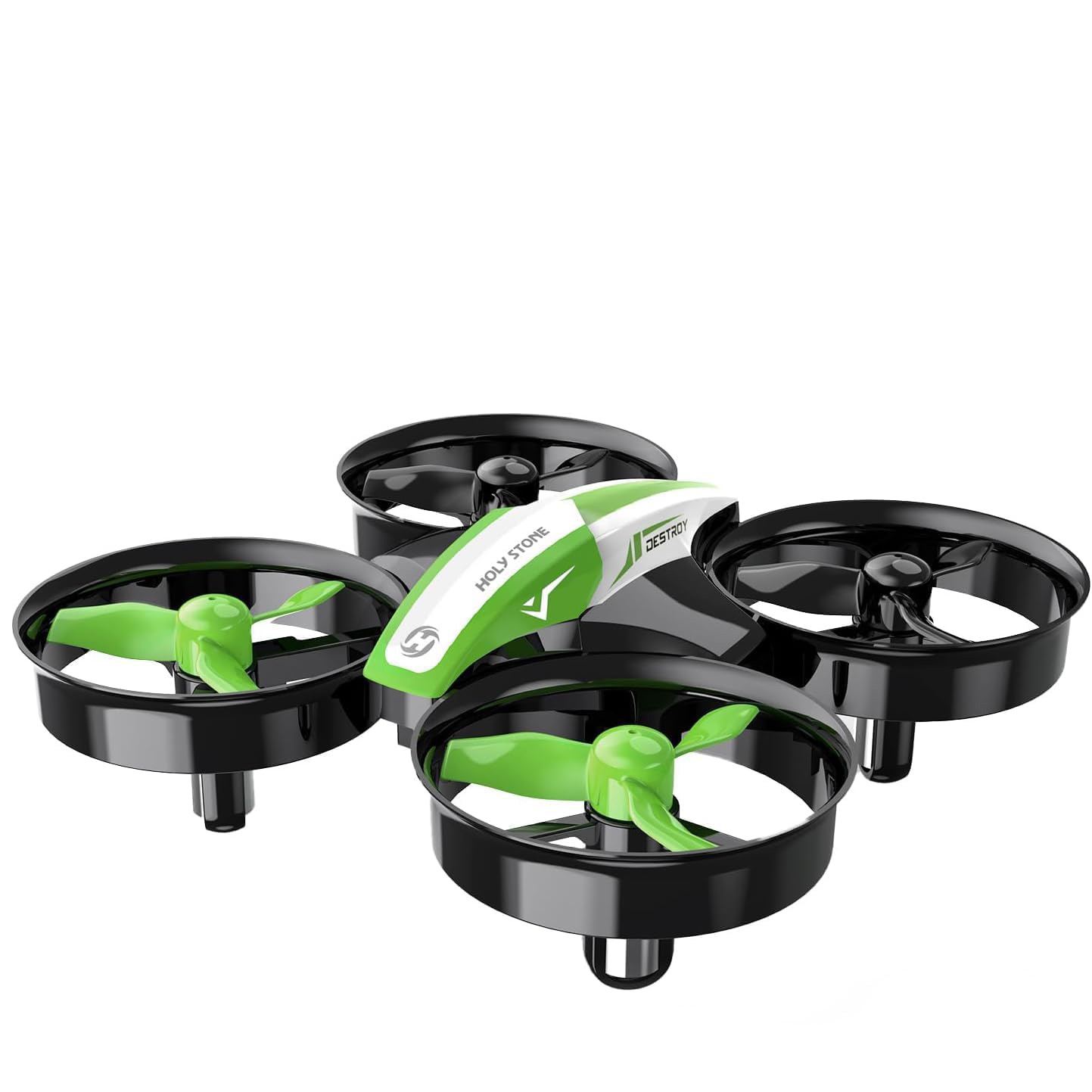
Best cheap toy drone
If you're looking for remote-controlled flying fun and no more (not even a camera) then this is ideal; the safe shielded propellers are ideal for indoor fun.

Best cheap camera drone
With this drone you get a 4K camera and GPS, as well as a high-quality frame and excellent controller and app, while the electronic image stabilization keeps costs down.
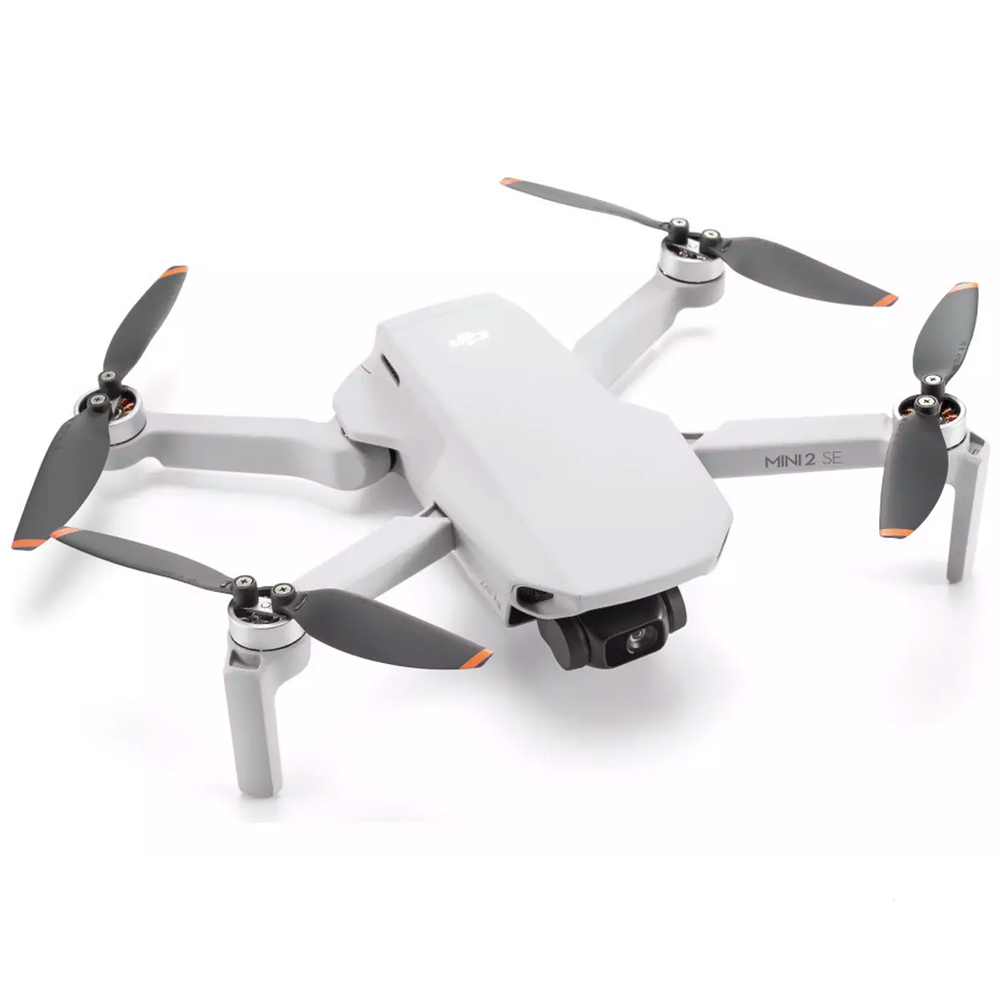
Best cheap DJI drone
The most basic model of DJI's range of drones is, thanks to their high standards, also a very good drone. It's easy for anyone in the family to use, and takes great photos and video.
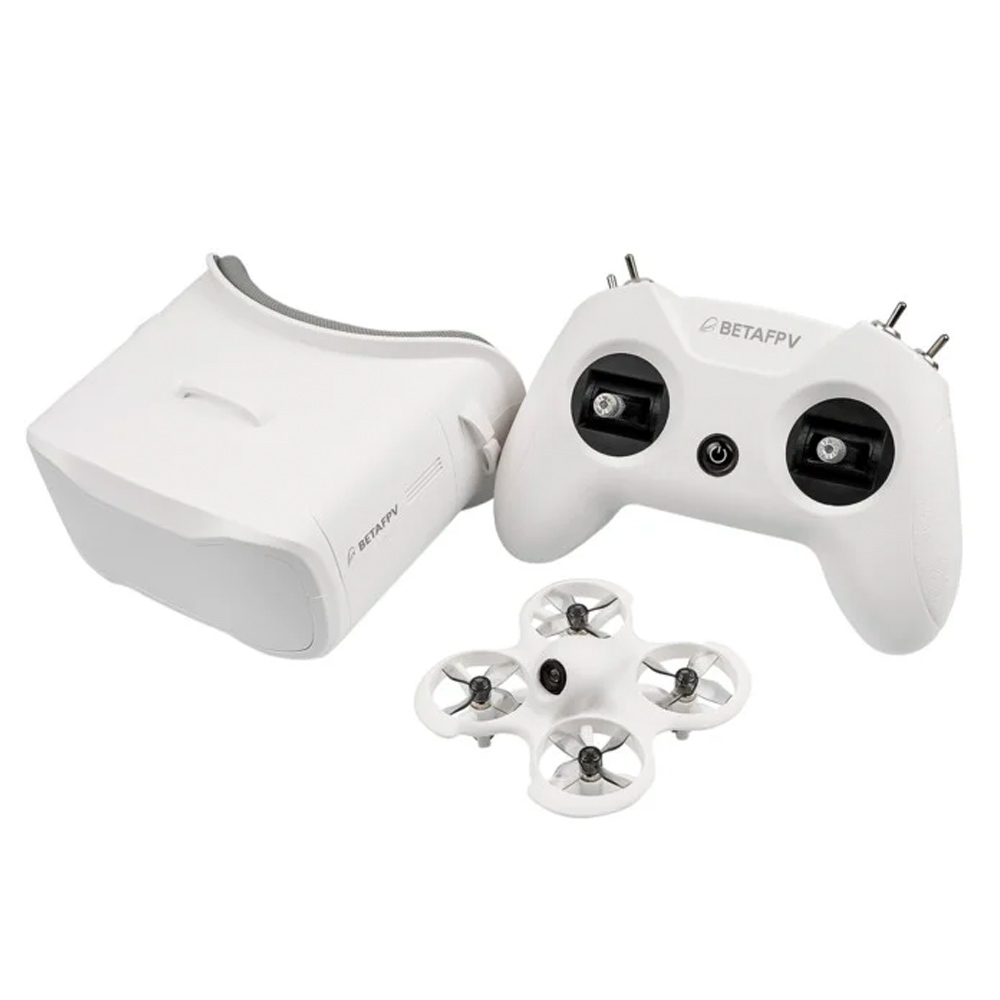
Best cheap FPV drone
An FPV (first person view) drone turns flying into a fully immersive experience, as you view the video footage through the supplied headset. Great fun for the price, indoors and out!

Best cheap follow-me drone
If you want a loyal folding drone smart enough to follow you without the effort of flying it, and that will land in the palm of your hand without risking hurting you this is the only choice.
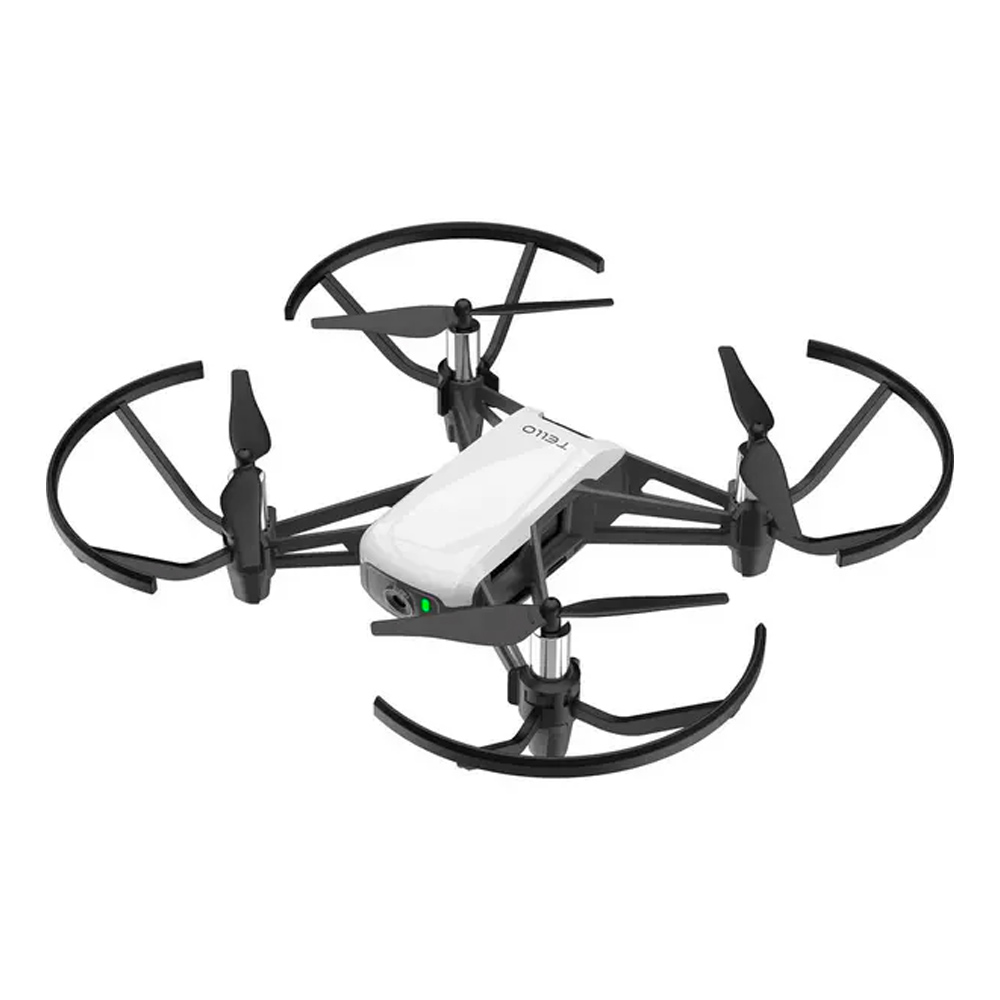
Best STEM drone
Boasting tech from DJI, and from Intel, this tiny lightweight drone can be flown using just a phone as a remote. It's not only fun, but offers loads of educational functions.
Best cheap drones to buy in 2025
Why you can trust Digital Camera World
Best cheap drone overall
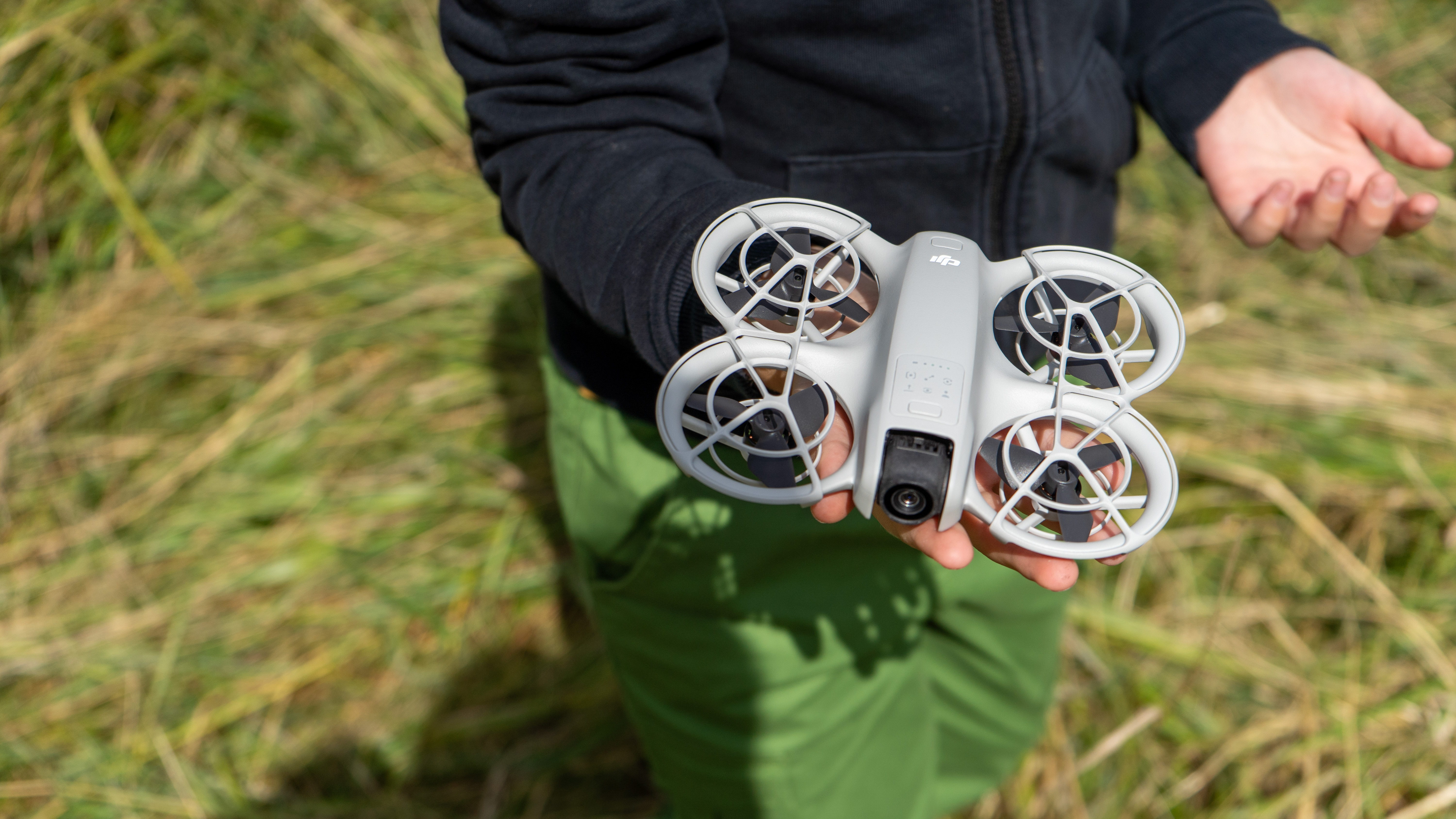
Specifications
Reasons to buy
Reasons to avoid
✅ You want a drone that doesn't cost too much at first but gives you options to grow
✅ You like the idea of 4K video
❌ You don't have a phone; you'll need one to set it up the first time
❌ You can't hold your hand still. Hand landing was tricky for my 8 year old at first.
Until recently, the best follow-me drone was the HoverAir X1 and that was that, but it seems to have, let's say, inspired DJI to create the Neo. The thing is DJI didn't stop at the AI tracking camera – they went further, adding a lot of the technologies they (as the consumer drone market leaders for more or less a decade) had already mastered.
So not only is the Neo cheaper, it is in many ways better, for example boasting a 4K camera built-in, as well as a better battery life. Since the launch DJI have rapidly added features too, like vertical format video recording (TikTok friendly, in other words) and kept improving the tracking AI.
More importantly, it has DJI's radio system, so you can expand it into a learning station for the much in-demand Hollywood skill of drone filmmaking – not just traditional (with a standard stick-style controller), but DJI's 'wand-like' FPV controller and goggles.
DJI has even gone to the trouble of bringing out new cheaper 'Goggles N3' to help those looking to master the fun (and marketable) skills of acrobatic flight, so it's hard not to admire the value not just in the drone but in the entire potential product line.
Perhaps not quite as elegant as the HoverAir (no folding), the caged design is safe and light, and anyone able to hold their hands still for more than about 30 seconds should be able to use it successfully.
Read my full DJI Neo review with test video (and see my son trying it)
Best toy drone
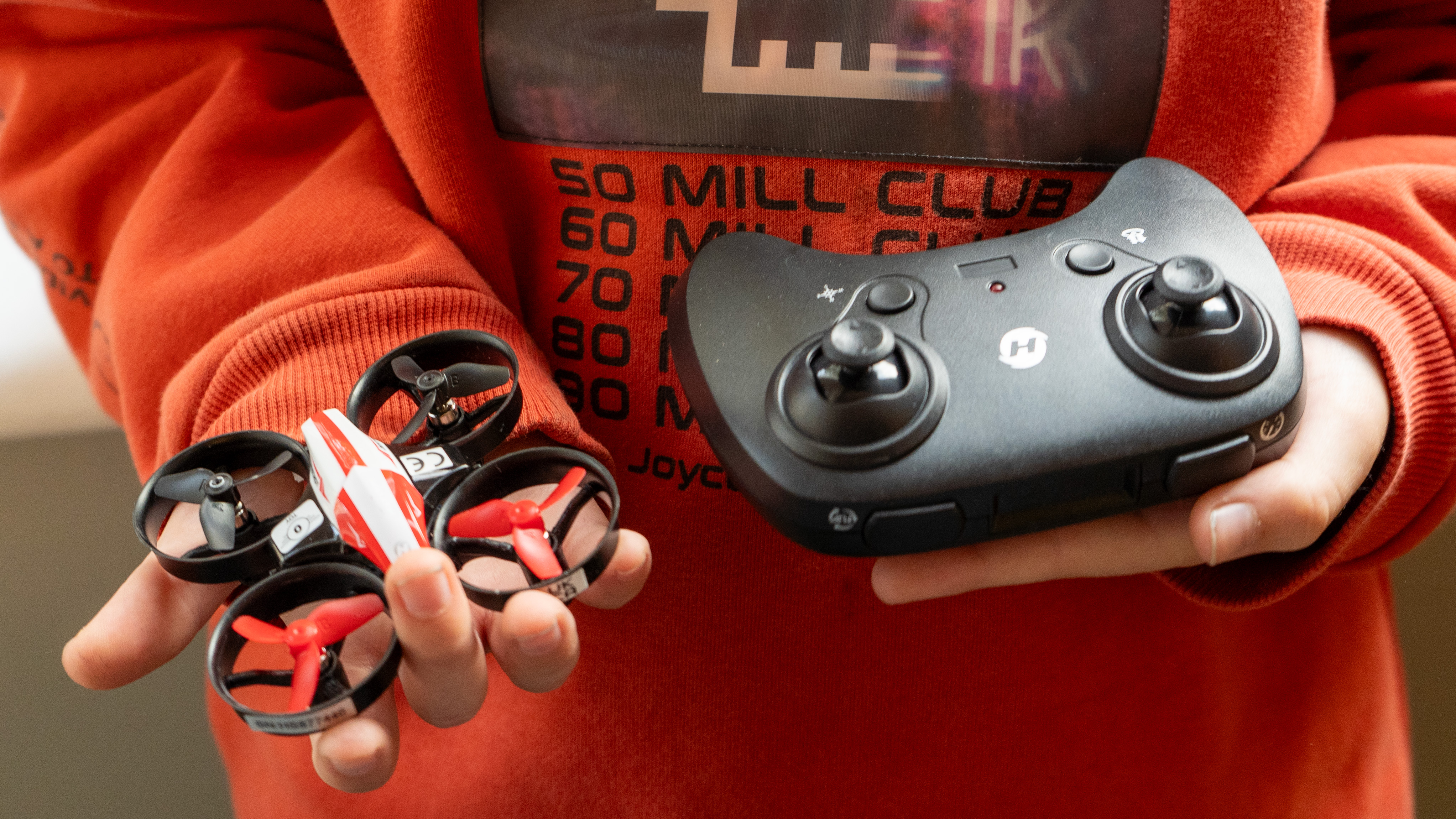
Specifications
Reasons to buy
Reasons to avoid
✅ You want cheap: The drone uses an app and wi-fi for control; handy for phone fans
✅ You want it safe: Not only is the weight low, but the guard keeps the propellor edges from hurting anyone
❌ You want a camera: This is a toy, plain and simple (though a good way to practice the controls).
❌ You want to fly outdoors: Very lightweight drones are vulnerable to even small wind gusts.
The Holy Stone 210 (similar to the Potensic A20, but more available) is our pick of the best drones for kids – I can say that very confidently having tested it with my 8-year-old (until he pretty much took over the test!)
It is compact and robust and available in some color options. Thanks to the in-built pressure sensor it is capable of hovering without the operator’s help. That said, as is typical with this class of drone, it’ll still drift a little without constant attention. There is a pilot-friendly ‘headless mode’ available, which some beginners prefer, but we think you’re better off with the standard controls.
In either case, the drone can be moved around a room using a single control stick, which is easier than most video games! If you do crash, there are good solid prop guards and the drone is too light to cause any serious harm.
What I like about it, though, is that the basic control layout is the same as more serious drones, even though the controller is friendlier with more game-like sticks, meaning it's a great way to pick up the basics with very little risk. Drone exams expect operators to be able to fly by watching the drone, so learning this way – not through a screen – is actually very wise (and fun)!
(It's not the same, but it is a similar experience – read my trusted colleague's full review of the Potensic A20)
Best low-cost camera drone
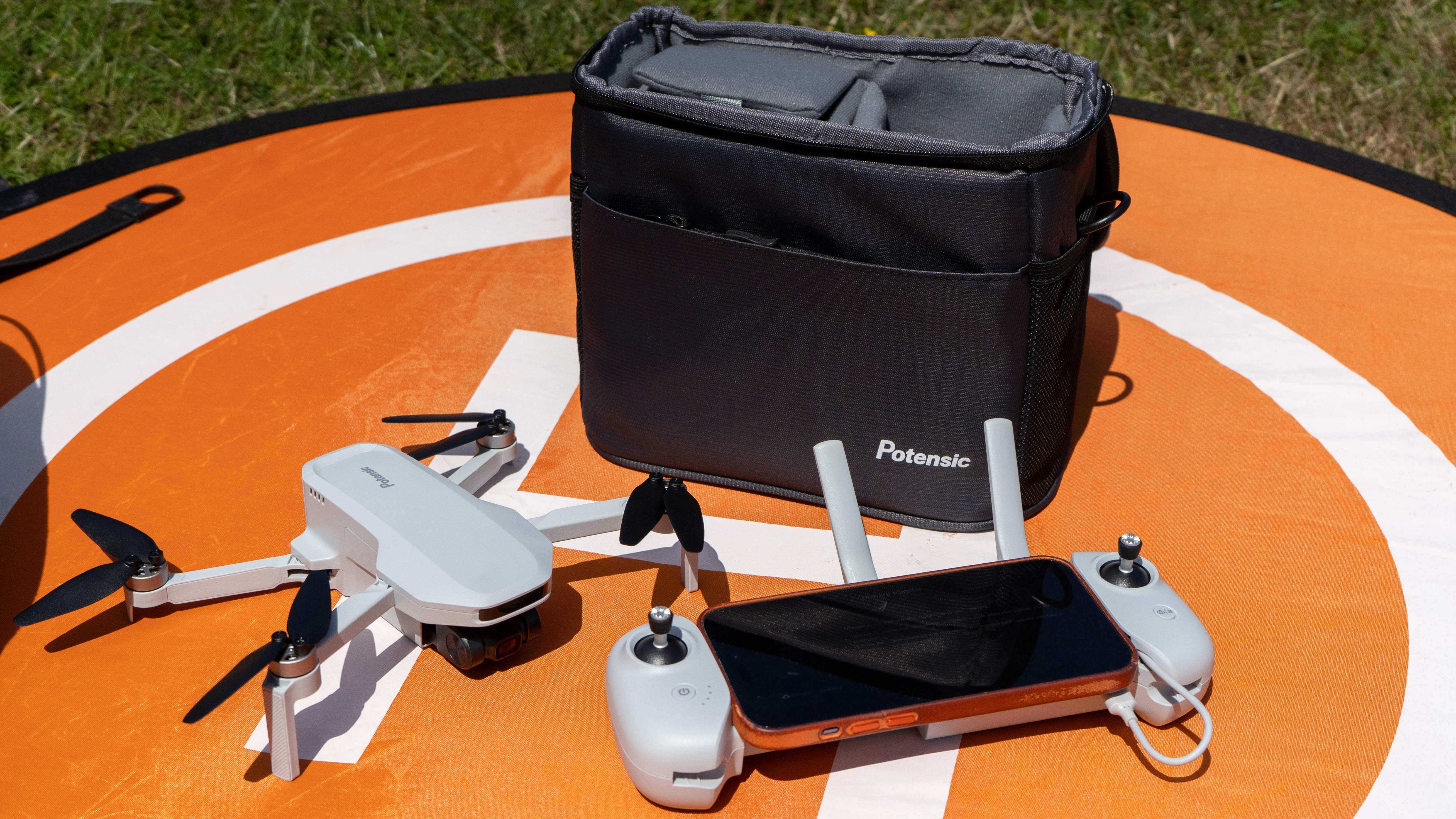
Specifications
Reasons to buy
Reasons to avoid
✅ You want good value: This drone is a bit cheaper than DJI, plus offers more in terms of features.
✅ Build quality matters: I have tried a lot of 'cheap' drones, but this feels as good as any premium
❌ You want perfect video: Dig a bit deeper for the Potensic Atom without SE for gimbal stabilization for even more stable video – it's still good value.
❌ You want fast battery charging: The battery charge quite slowly, but Potensic sell multipacks
I tested this so and I can tell you it's a really great drone that can genuinely compete with the biggest brand in the business. There is one big trade-off – the camera does not have a gimbal to stabilize it (although for a bit more its sibling, the Potensic Atom without the 'SE' does).
Now, to be fair, a lot of the cheap drones you'll see employ the same approach – simply dampening the drone's vibrations as best they can with the drone design. With the Atom SE, Potensic have gone one further and used electronic image stabilization to further improve the picture so, compared to many modestly priced drones this is still a winner, but against DJI's offerings (and its own pricier sister) it isn't quite a video master.
I'd say, though, that for a lot of people, it makes a lot of sense. There is fun to be had, and you can absolutely get some sharable content. The controller and software are good quality, too – they don't feel 'cheap' at all.
Read more: reviews of the Potensic Atom and Potensic Atom SE with sample videos
Best cheap DJI drone

Specifications
Reasons to buy
Reasons to avoid
✅ You love social media: It can produce 5 styles of shareable selfie clips automatically called QuickShots
✅ You want to fly outdoors: The Mini 2 SE will survive Level 5 winds and has good range
❌ You need 4K: The drone records at 2.7K max – which look great but might not please pixel peepers (the similar Mini 4K solves this).
❌ You want collision sensors: It might look like it has them, but they're just vents.
The Mini 2 SE is a budget drone. If you disagree, remember DJI also supplies high-end broadcast equipment. remember, too that this is only still on this list – the 'cheap' drones because it can be found for slightly cheaper than the Mini 4K which has effectively replaced it in DJI's lineup – I'd strongly suggest that if you can spare the small amount extra.
Either way, the Mini 2 SE or the Mini 4K are orders of magnitude cheaper than, say, the Mavic 3 Pro Cine, but the features available on the Mini 2 SE are not that different; a 3-axis stabilized gimbal produces smooth, rich cinematic-looking 2.7K video and a top-notch radio remote controller which links to your phone via cable so there is no delay (latency) in feedback.
The Mini 2 SE helpfully updated the radio controller, rectifying the one real complaint about the original Mini SE, which was that the radio control range was limited compared to other DJI drones (still exceeding most on this list though). Long radio range really means little chance of control or video dropping out.
The drone sports GPS for automatic hover, and return to home, and some social-friendly ‘Quickshot’ modes (where the drone and camera do the work for you), as well as a landing sensor so it can touch down gently. It’s also just under the registration weight for those who hate paperwork!
We love that DJI is always thinking like photographers – adding functions like RAW and exposure bracketing – as well as taking advantage of the aerial location with assorted panoramas. The 2.7K video is excellent but if you need a true 4K check out the DJI Mini 3.
Read more: DJI Mini 2 SE review (Or read the Mini 4K review)
Best cheap FPV drone
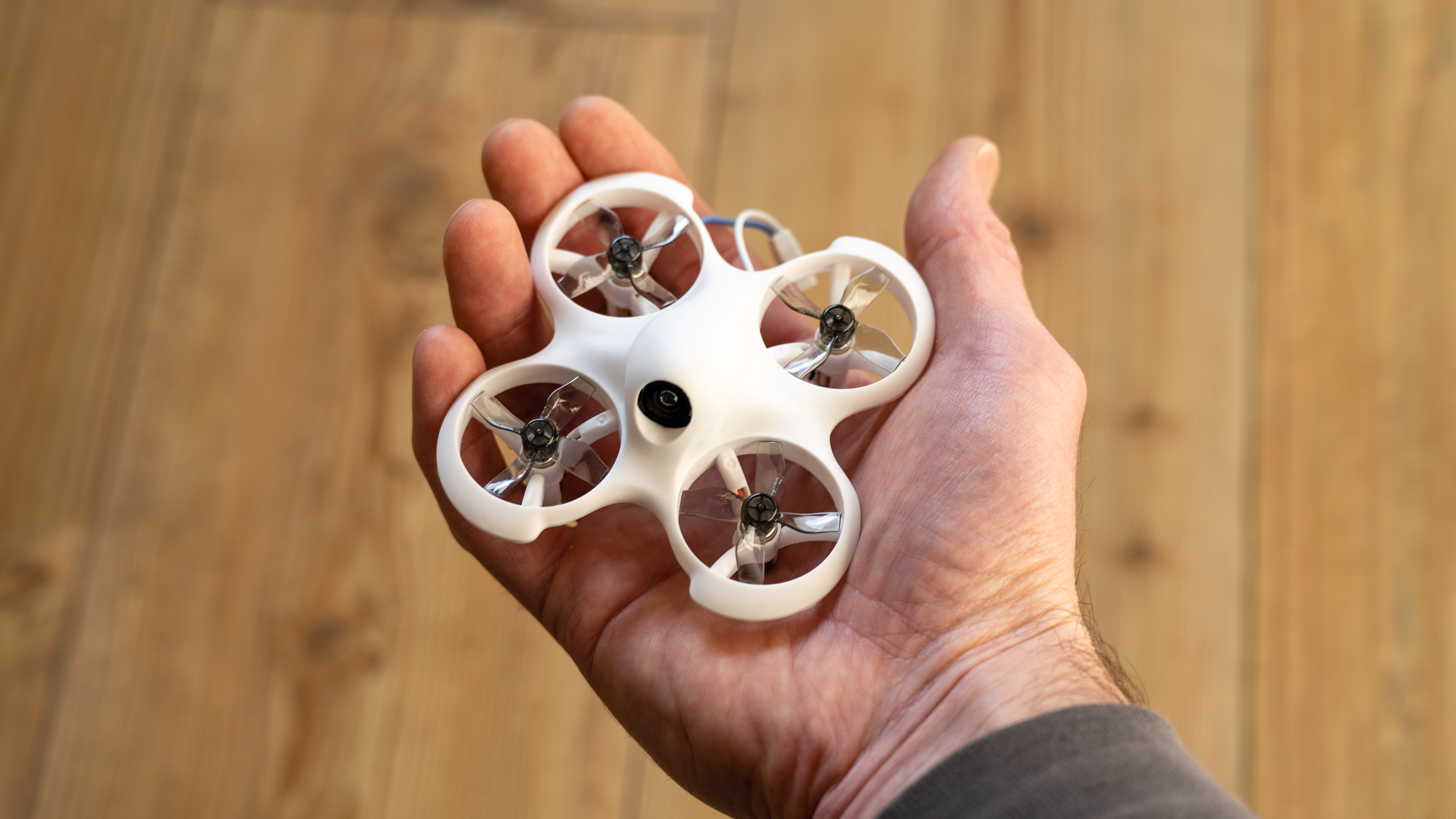
Specifications
Reasons to buy
Reasons to avoid
✅ You want a bundle: This is a kit with everything you need to fly.
✅ You want to fly fast and for fun: The micro whoop style is acrobatic.
❌ You experience motion sickness: Like VR, FPV goggles aren’t for everyone.
❌ You’d like to take aerial photos: This is definitely not about still photos.
The Cetus line of FPV drone bundles offers a relatively user-friendly way into the unique experience of flying a drone as if you were inside it. Gaining your FPV chops is aspirational amongst kids of all ages – there are plenty of experienced drone users who still long to try this more fun, immersive means of flying. I, myself, was much more adept with 'normal' drones before hesitantly trying FPV.
The design of the Cetus is all about minimizing risk (and cost); the whoop-style airframe completely encases the propellors in a single plastic mold which also houses and shields the camera. This is a smart move because when you crash – and you will, a lot – it absorbs and dampens the impact. Oh, and it's not just me saying you'll crash, though I did a fair bit – any FPV pilot will tell you it's about taking risks and having fun.
A sensor allows stable hovering at a set distance from the floor, making this an ideal indoor toy, while the VTX (video transmitter) includes basic on-screen display data for the pilot. Enthusiasts can also use the controller with FPV simulators while the batteries charge, and a charge tester is in the bundle.
See our full BETAFPV Cetus Lite FPV review
Best STEM drone
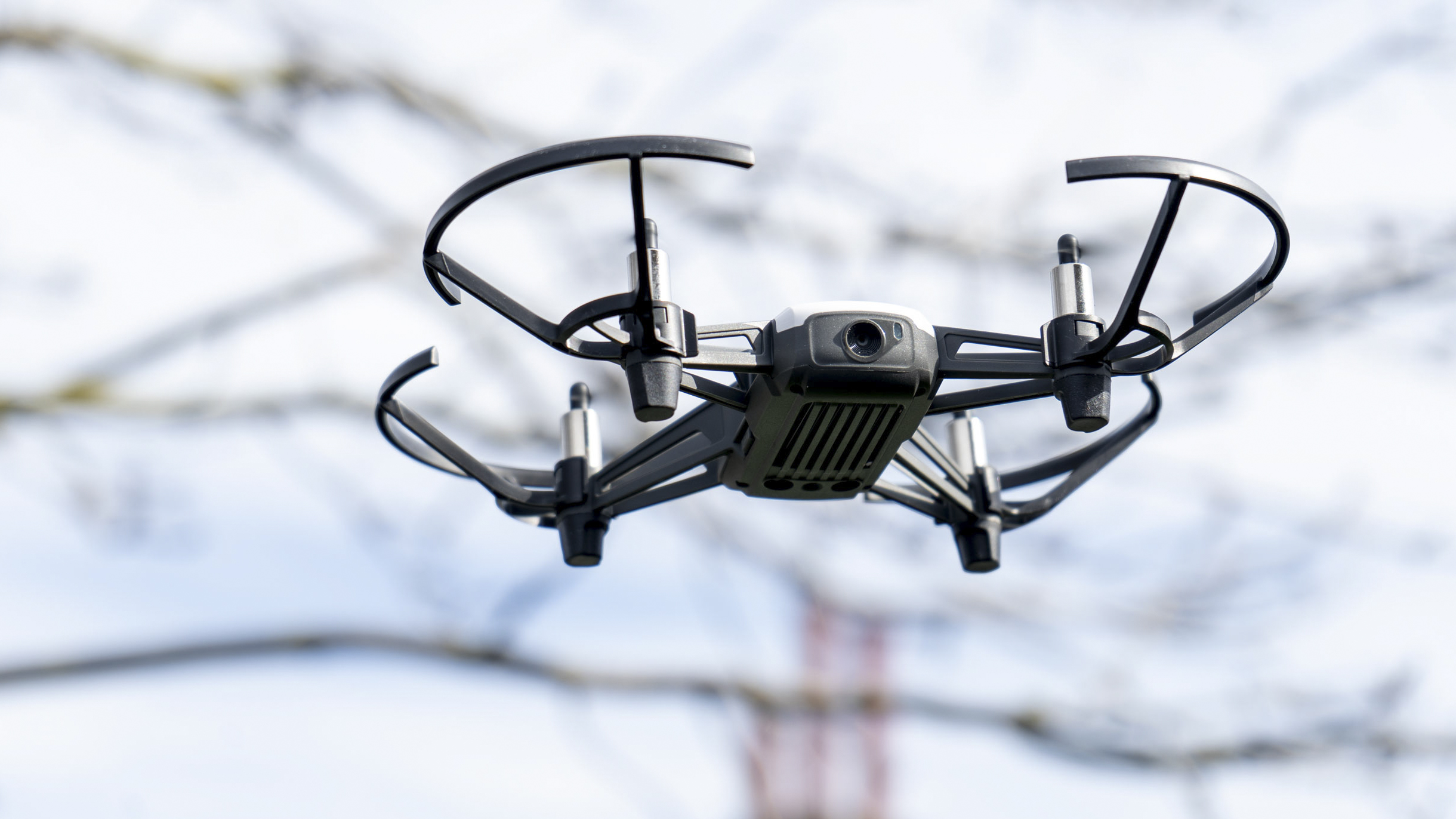
Specifications
Reasons to buy
Reasons to avoid
✅ You want app control: The drone uses an app and wi-fi for control; handy for phone fans
✅ You want easy landing: Compared to some toys, this drone has better landing sensors.
❌ You want long range: Using phone Wi-Fi is great indoors and in the yard, but thats about it.
❌ You want super-stable video: This is more educational toy than creative tool; you need a gimbal for that.
Despite harking back to 2018, the Tello seems to happily occupy this spot in the budget drones list without any contenders to topple it. The combination of DJI’s tech and an intel processor gives the system a lot of power so the digital stabilization of the video is good for 720P.
The drone has removable propellor protection for safe play, and vision-based downward sensors for perfect hovering and landing (though the flash launch by throwing it into the air is even cooler).
We like that remote isn’t needed – the EZ Shots control app provides a live view and on-screen controls – but you can always add a generic Bluetooth game controller. The stand-out feature, though, has to be compatibility with the education-targeted programming language Scratch making this the best way to teach programming.
Sadly, while it is on this list for now as it's still a great product, the Tello drone is relatively old and DJI have closed the related education division, I'm not expecting much future support.
Read our full Ryze Tello review for more details
Best follow-me drone
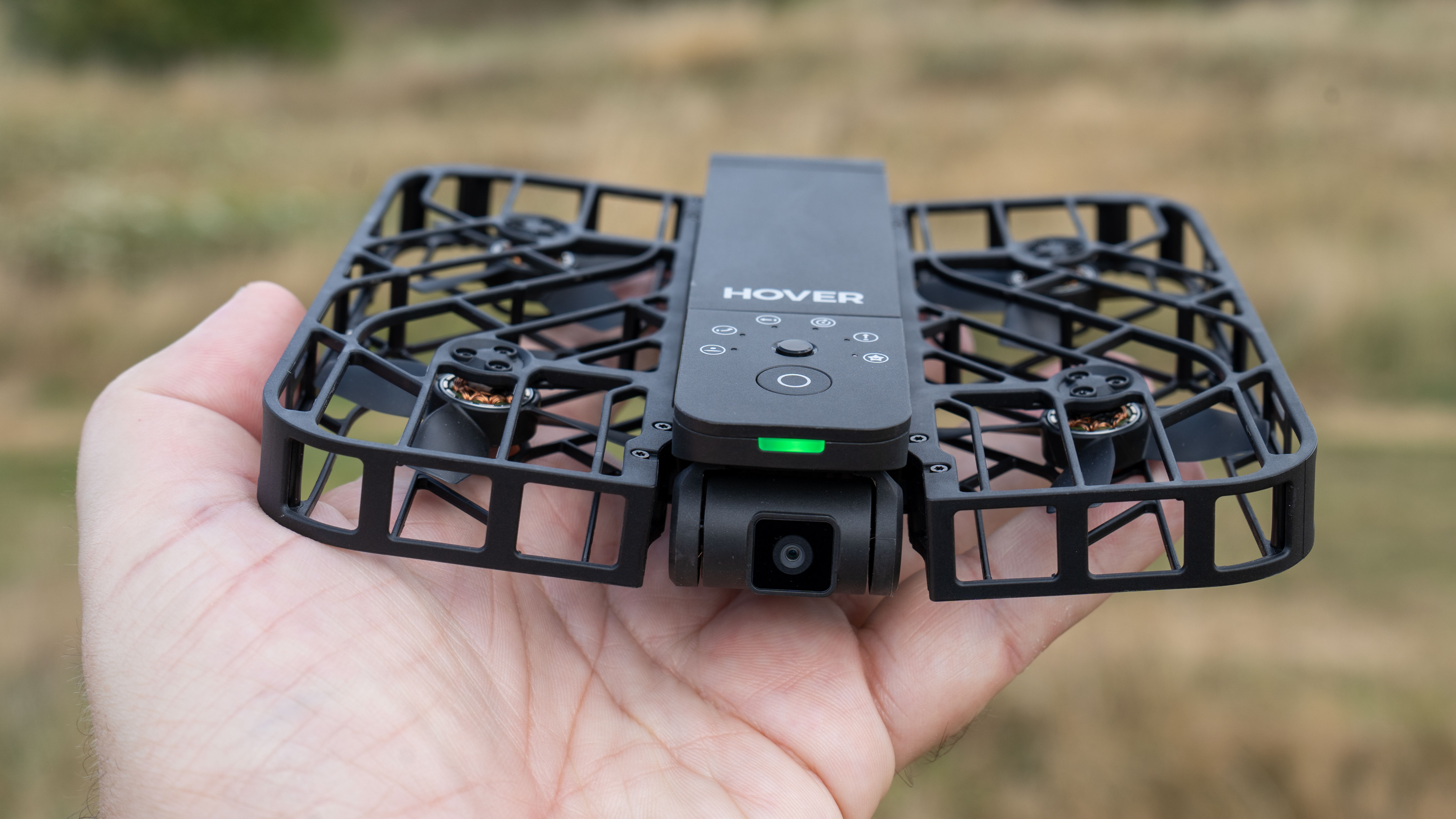
Specifications
Reasons to buy
Reasons to avoid
✅ You want a smart drone: This drone can follow you using AI.
✅ You want gesture control: All control takes place via the phone or just via gestures if you prefer.
❌ You want long battery life: The light drone with cage design is limited to under 10 minutes flight.
❌ You want a long range: This wi-fi control is limited to about 100m maximum.
It has to be acknowledged that the word 'cheap' is a relative term. For a long time, the AI required to follow an individual person came with drones with prices a long way over $1,000 so, with that in mind, this is something of a bargain. It's also a joy to use, with a totally different way of approaching the idea of using drones that is great to take on family trips and takes the learning and difficulty out of getting amazing shareable clips.
The sensibly safe design came as a bit of a surprise to me – the AI tracks you with its camera and (once initially set up using a phone) you can use it without any other device – just a couple of button presses on the body and an outstretched hand. I found the speaker and voice very reassuring too (rather than annoying as it can be with a lot of tech).
I decided it was best to think of the HoverAir X1 as an "angel on your shoulder," and it can keep up with cyclists and runners while the blades are always safely in the folding cage design. Brilliant and different.
See our full HoverAir X1 review
Best for social media
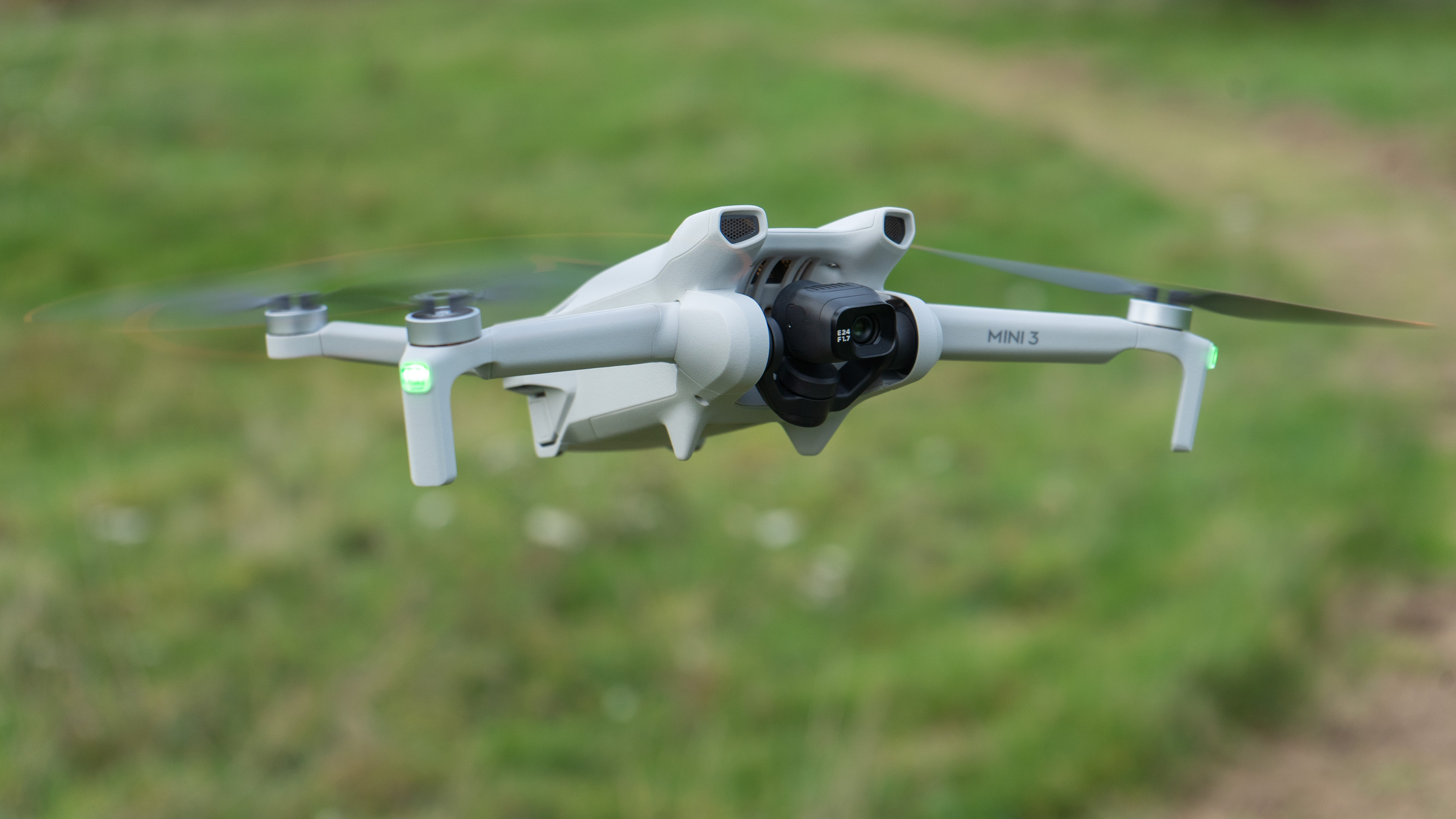
Specifications
Reasons to buy
Reasons to avoid
✅ You want smooth 4K: The camera's gimbal gets super-steady video.
✅ You want to rotate the camera: The camera can turn through 90 degrees for social media-friendly shooting.
❌ You want collision sensors: DJI will still ask for more cash (the DJI Mini 4 Pro) if you want collision sensors).
❌ You want telephoto: You need to look further up the DJI range to the Air 3 for that.
The Mini 2 SE is now available in most markets, but DJI’s next cheapest option is the Mini 3. This is a trimmed-down version of the Mini 3 Pro which debuted 7 months before but the sacrifices are not too many. That, in turn, has essentially been replaced by the Mini 4 Pro – yes, these things move fast. The crucial difference, though, hasn't changed.
This drone manages up to 10km range with DJI’s relatively new radios (it uses O2 tech) but compared to those with 'Pro' at the end of the name it drops the smart collision sensors and some subject tracking features. It also drops 4K 60fps mode, but can still capture 4K 30fps which is more than enough for most. Importantly for social influencers – or those who just mostly post for phone users – it retains the ability to rotate the main camera to portrait mode for shooting for TikTok etc. friendly video without too much cropping.
For many content creators, this is a great way to trim about $200 from the price of a high-end, low-weight drone. It remains pricey but noticeably cheaper than its siblings. Since most of the time you don't really try to fly into the wall (well, I don't) you might argue that collision sensors aren't all that useful and on the Mini 3 Pro that was especially true as they weren't even all-round sensors – only front and back. By that logic, this drone remains a bit of a bargain, by DJI's standards at least!
Read our full DJI Mini 3 review for more details
Other budget options
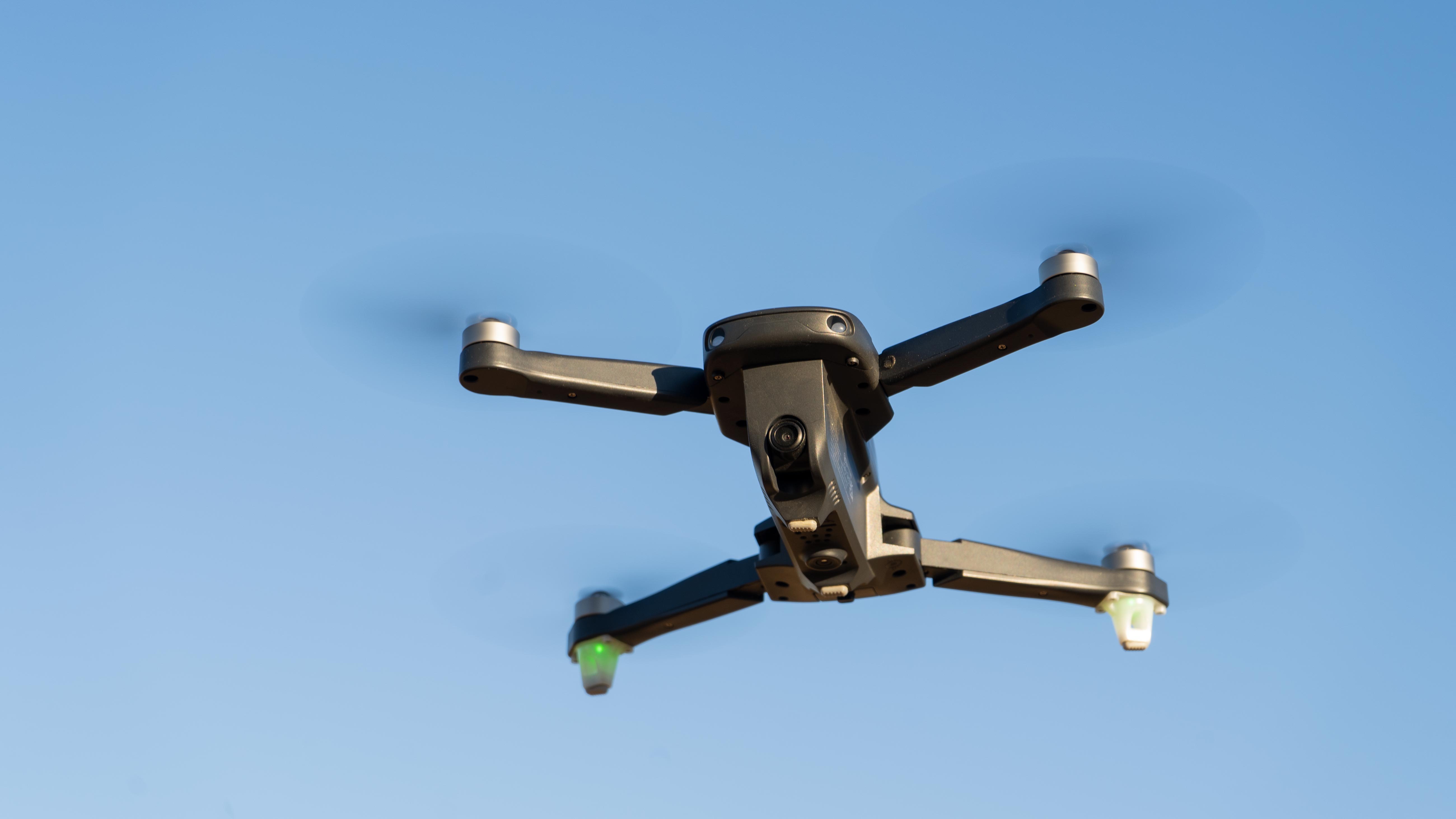
Specifications
Reasons to buy
Reasons to avoid
The Holy Stone HS175D is an upgrade to the HS175, which we already liked, but the manufacturers have gone on to add brushless motors and a 2.7K sensor (not 4K, as it falsely boasts). It's clear from the design of the HS175D that Holy Stone has taken a few cues from the DJI Mavic Air 2, which we feel is pretty reasonable. If you're going to crib, do it from the best.
Comfortably under the weight limit for registration, the Holy Stone HS175D also packs in plenty of useful features, like GPS, return to home, altitude hold, one-key take-off/landing, follow-me, and more.
The camera can tilt vertically in flight, and having a Micro SD slot is really handy for recording high-quality footage (though you also have the option to record directly to the app for quick sharing. There's also electronic stabilization for the 4K footage – it's not cinema quality, but it does well.
Control can be done with the fold-out remote, powered by two AA batteries. It's easy to use, and while there's a little latency, it functions well if you stay comfortably within the 500m range.
See our full Holy Stone HS175D review for more details
FAQs
Is a cheap drone the best for a beginner?
Not necessarily. The cheapest drones tend to lack helpful systems like GPS which keep a drone hovering in one place without help, and might not have a camera at all. A moderately-priced beginner drone with a decent camera might be the only drone you'll ever need and – with GPS, a gimbal stabilized camera, and good software – it'll still be cheaper in the long run.
We'd say think of the very cheap as toys, and then think more about what you want. Getting to grips with the controls is more about self-restraint and caution, which you might have.
Of course, some expensive drones also have collision avoidance tech – something else which one feels might be more helpful for beginners!
How we test drones
How do you test drones?
At Digital Camera World we fly drones, capturing images and video with them (where there is a camera) in a variety of different conditions appropriate to the drone. I (Adam Juniper) am, our 'drone expert' and a qualified drone pilot, and I try to review as many of the drones myself, or work with reviewers I know and trust. The goal is to be consistent but also to test each drone appropriately to its design and purpose – there is no sense in trying to get movie-quality footage from a toy drone, for example.
We also think the user experience is important – cheap doesn't mean life should be difficult, so we always make sure we set up a new drone and make sure the process is straightforward and well explained by any documentation in the box.
Read more:
The best camera drones
Best indoor drones
Best drones for kids
Best accessories for your drone
The best DJI drones
The best camera backpacks
Get the Digital Camera World Newsletter
The best camera deals, reviews, product advice, and unmissable photography news, direct to your inbox!

With over 20 years of expertise as a tech journalist, Adam brings a wealth of knowledge across a vast number of product categories, including timelapse cameras, home security cameras, NVR cameras, photography books, webcams, 3D printers and 3D scanners, borescopes, radar detectors… and, above all, drones.
Adam is our resident expert on all aspects of camera drones and drone photography, from buying guides on the best choices for aerial photographers of all ability levels to the latest rules and regulations on piloting drones.
He is the author of a number of books including The Complete Guide to Drones, The Smart Smart Home Handbook, 101 Tips for DSLR Video and The Drone Pilot's Handbook.
